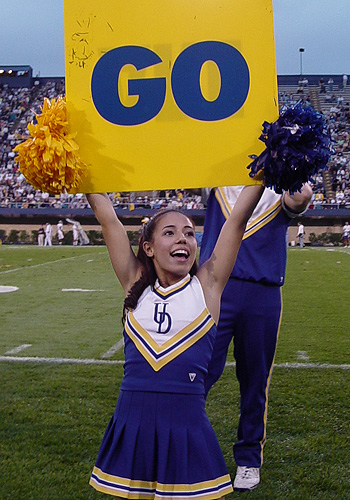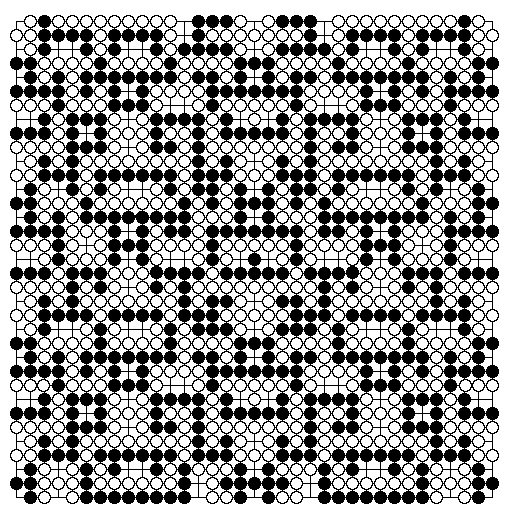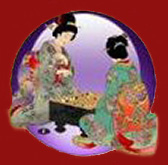
Game of Go
Connections
Proverbs
Concepts
One of my games
Rating and handicapping
Software
Books
and vendors
Links
The game of Go is one of
the best – arguably the very best – boardgame ever invented.
According to The Economist magazine, it is "the
game to beat all games". It goes
back 3000 years in time and originated in China. The Japanese
play Go with as much or more enthusiasm as the Russians play chess.
It is a pure game of strategy and tactics with no random elements,
just like chess. Go is a territory-oriented game played with stones
on a grid. It is said that when the Americans were fighting the war
with the Vietnamese in the 1960s, the former were thinking in terms
of chess (big pieces like rooks and queens rule the battlefield) while the latter were using the strategies of Go
(all forces are essentially equal and the objective is to control the maximum amount
of territory). See Scott A. Boorman, The Protracted Game: A Wei-ch’i
Interpretation of Maoist Revolutionary Strategy, New York & London:
Oxford University Press, 1969.
 Go offers an extraordinary intellectual challenge. The
rules are simple, yet attempts to program computers to play Go have not
met with much success. It is not difficult for a competent Go player to
beat the best Go program available. This makes the programming challenge
a great one as well, and many bright minds are presently turned to that
'artificial intelligence' task. There is great scope for intuition and
experiment in a game of Go, especially in the opening. Go has a very
effective handicapping system, enabling players of widely differing
strengths to play each other on equal terms. It also has a good
personal skill rating
system.
Go offers an extraordinary intellectual challenge. The
rules are simple, yet attempts to program computers to play Go have not
met with much success. It is not difficult for a competent Go player to
beat the best Go program available. This makes the programming challenge
a great one as well, and many bright minds are presently turned to that
'artificial intelligence' task. There is great scope for intuition and
experiment in a game of Go, especially in the opening. Go has a very
effective handicapping system, enabling players of widely differing
strengths to play each other on equal terms. It also has a good
personal skill rating
system.
The basic rules are simple. The board has 19 horizontal and 19 vertical lines, so there are 361 intersections. These intersections are considered 'points of territory' and the object of the game is to control as many of them as possible, by encirclement. One player has a pot of black stones and the other a pot of white stones. The black player goes first and places a black stone on any one of the 361 points. Then the white player does likewise and the game continues in this manner until neither wishes to play any more stones on the board. When the game is over, the score is tallied to determine the winner. Each player gets points for the vacant territory (intersections) his stones surround. This is the essence of the game.
However, there is one additional aspect that is critical. A player can kill one or more of his opponent's stones by surrounding it/them on all adjacent points of territory. Thus, four black stones could surround a lone white stone in the middle of the board, for example, or six black stones could surround a pair of white stones side-by-side in the middle of the board. When stones are surrounded in this way, they are removed from the board and the dead stones count as additional points for the side that killed them.
Central to the game of Go are the concepts of connections and good shape. One surrounds territory using groups of connected stones. At the start of the game the connections are loose; they get tightened up as the game proceeds.
Those are the basics, although the rules are actually just a bit more complicated. If you want to learn more about the basics of Go, there are several good sources on the Internet. I recommend the British Go Association. You could also read John Bate's A Beginner's Introduction to Go and Karl Baker's The Way to Go.
You can check out one of my own games, with extensive comments. It requires the Java runtime files be installed on your computer. You can install them first if you wish. Then view my game.
While the standard game of Go is played on a 19x19 board, one can also play on smaller boards and, of course, the game is completed more quickly. If you have the Java runtime installed you can click here to see an example game played on a 9x9 board. Click here to see another.
For those who are more serious about their interest in Go, there is lots of good, in-depth information available on the Internet.
There is an active usenet group for go at news:rec.games.go.
Alternatively, you might
prefer:
http://groups-beta.google.com/group/rec.games.go/about.
You can play Go over the Internet at:
Dragon Go Server (turn-based)
ItsYourTurn (turn-based)
Little Golem (turn-based)
Yahoo (turn-based)
Internet Go Server (live)
Kiseido Go Server (live)
No Name Go Server (live)
The Japanese Rules of Go (in English) are readily available online.
You will find useful definitions of Go terms at Sensei.
Several useful Go proverbs serve as reminders of the principles of good play.
An excellent 41-page treatise on the use of Go thinking in Chinese military strategy, authored by Dr. David Lai and entitled "Learning from the Stones: A Go Approach to Mastering China's Strategic Concept, Shi", is available at the site of the Strategic Studies Institute of the U.S. Army War College or here.
Hideki Nakazawa has devised a fascinating example of seki. All of the stones on the extra-large 35x35 board below are in a seki arrangement. If either player puts a stone anywhere, the other player can then kill all of his stones in a cascading series of plays. Hiroki Mori has illustrated how this works using his GoodShape Java applet.

Compiled, developed and maintained by Philip Smith

